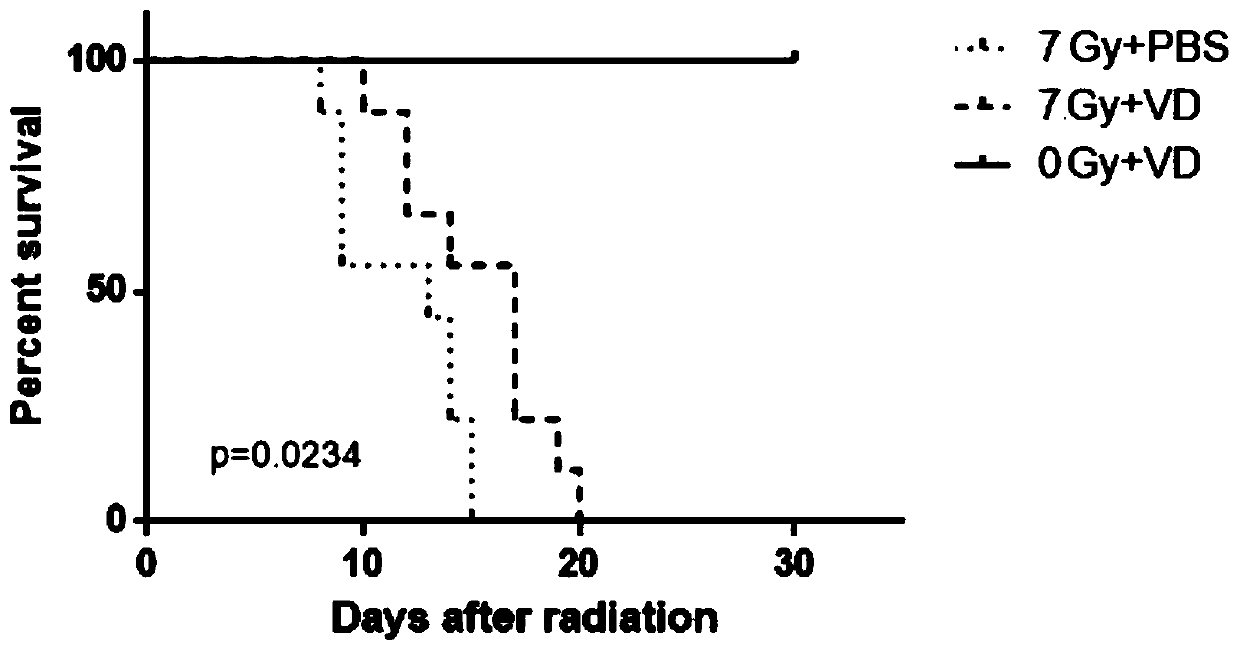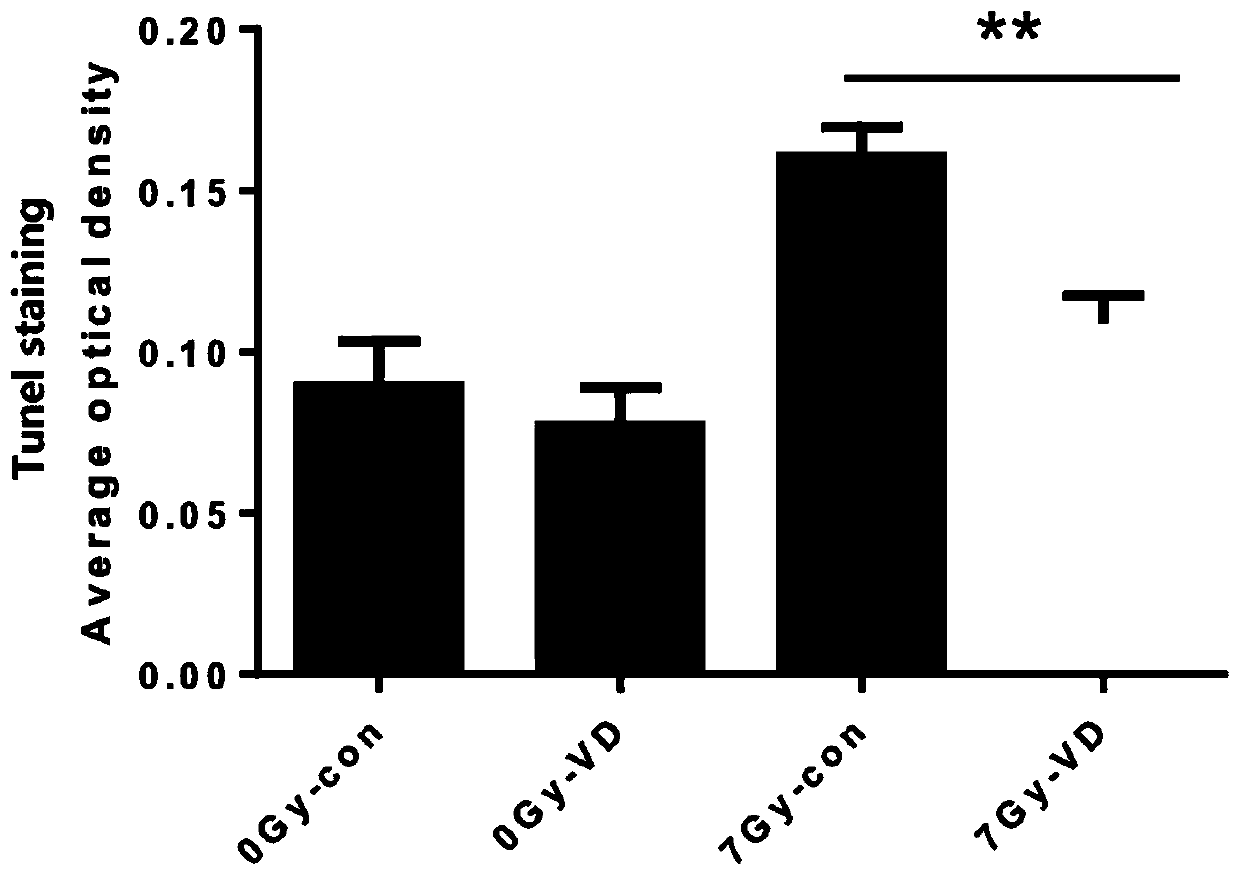Application of vitamin D in prevention and treatment of intestinal injury caused by radiation
A vitamin and intestinal injury technology, applied in the field of biomedicine, can solve the problems of difficult treatment, non-specific treatment methods, complex mechanism of radiation intestinal injury, etc., and achieve outstanding effects of intestinal tissue damage
- Summary
- Abstract
- Description
- Claims
- Application Information
AI Technical Summary
Problems solved by technology
Method used
Image
Examples
experiment example 1
[0025] Experimental example 1 short-term effect
[0026] Mice: Male wild-type C57 BL / 6 mice (6-8 weeks) were purchased from the Chinese Academy of Sciences (Shanghai). All mice were raised in the SPF laboratory of the Animal Experiment Center of the Second Military Medical University of the Chinese People's Liberation Army (Shanghai). The mice were randomly divided into four groups. The control group was given a single intraperitoneal injection of 2μg / kg of phosphate buffered saline solution per day for 3 days before irradiation, followed by 7Gy of whole body irradiation at a dose rate of 1Gy / min; The group was given a single intraperitoneal injection of 2μg / kg of 1,25-(OH)2-VitD daily to mice 3 days before irradiation 3 , And then given 7Gy whole body irradiation with a dose rate of 1Gy / min; the administration control group was also given a single intraperitoneal injection of 2μg / kg of 1,25-(OH)2-VitD every day for 3 days before irradiation 3 , But not irradiated; the blank cont...
experiment example 2
[0037] Experimental example 2 long-term effect
[0038] The specific method is: feeding the mice with deficient and high vitamin D feed, and testing after 1 month. Experimental grouping: male BALB / c mice aged 6-8 weeks were selected and divided into control group, high vitamin D group, and vitamin D deficiency group according to a completely random method. The control group was fed with AIN93G standard feed, the high-vitamin D group was fed with 20000IU of high-vitamin D feed, and the vitamin D-deficient group was fed with AIN93G vitamin D-deficient feed. The mice in each group were fed relevant feed for 3 months. All mice were kept in a standardized animal room with sufficient water, 12h circadian rhythm, and a temperature of 22-25°C.
[0039] Image 6 Photomicrographs of mouse intestinal villi and crypts; Image 6 As shown, high vitamin D reduced the radiation intestinal injury in mice, while the intestinal injury in vitamin D-deficient mice was aggravated: the mice were fed a ...
PUM
 Login to View More
Login to View More Abstract
Description
Claims
Application Information
 Login to View More
Login to View More - R&D
- Intellectual Property
- Life Sciences
- Materials
- Tech Scout
- Unparalleled Data Quality
- Higher Quality Content
- 60% Fewer Hallucinations
Browse by: Latest US Patents, China's latest patents, Technical Efficacy Thesaurus, Application Domain, Technology Topic, Popular Technical Reports.
© 2025 PatSnap. All rights reserved.Legal|Privacy policy|Modern Slavery Act Transparency Statement|Sitemap|About US| Contact US: help@patsnap.com



